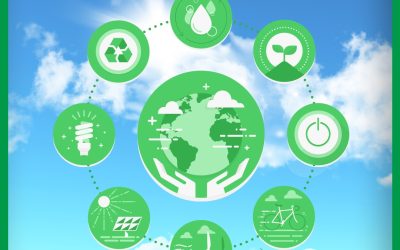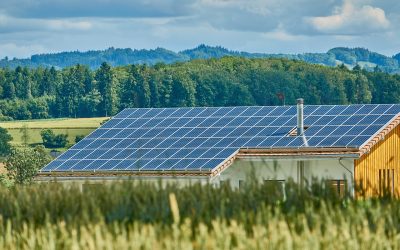So you’ve probably noticed those shiny solar panels popping up on rooftops and fields everywhere, but did you know that these installations are more than just a renewable energy source? They’re also serving as valuable educational tools. With the increasing importance of sustainability and the need to teach future generations about clean energy, solar installations have become an innovative way to engage students and the community in learning about the benefits of solar power, how it works, and its impact on the environment. By incorporating practical lessons and hands-on experience, solar installations are not only helping reduce carbon emissions but also shaping a more informed and environmentally conscious society.
Benefits of using solar installations as educational tools
Promotes hands-on learning
One of the major benefits of using solar installations as educational tools is that they promote hands-on learning. Students can actively engage in the process of installing, monitoring, and maintaining solar panels, which provides them with valuable practical skills. By working with solar installations, students can develop problem-solving abilities, critical thinking skills, and teamwork. This hands-on approach to learning not only enhances their understanding of renewable energy but also prepares them for real-world challenges.
Teaches about renewable energy
Solar installations in educational institutions provide an excellent opportunity to teach students about renewable energy. By seeing solar panels in action and understanding how they generate electricity, students can learn about the principles of solar power and the importance of harnessing renewable sources of energy. This knowledge enables them to grasp the potential of solar energy and its positive impact on the environment. Furthermore, it encourages them to explore other forms of renewable energy such as wind and hydroelectric power.
Demonstrates sustainable living practices
Another benefit of using solar installations as educational tools is that they demonstrate sustainable living practices. By integrating solar panels into the infrastructure of educational institutions, students can witness firsthand the advantages of transitioning to cleaner and more sustainable energy sources. This experience raises awareness about the environmental impact of traditional energy sources and motivates students to adopt sustainable practices both in their personal lives and in their future careers. It promotes a culture of sustainability and fosters a sense of responsibility towards the planet.
Integration of solar installations in educational institutions
Solar panels on school rooftops
One common way of integrating solar installations in educational institutions is by installing solar panels on school rooftops. This makes efficient use of available space and allows schools to generate clean energy on-site. Rooftop solar panels can power various systems within the school, including lighting, heating, and electrical appliances, reducing the reliance on grid electricity. This integration not only provides a practical application of solar technology but also allows students to witness the direct benefits of solar energy in their own school environment.
Solar-powered learning centers
Another effective way of integrating solar installations in educational institutions is through the establishment of solar-powered learning centers. These centers serve as dedicated spaces for students to learn about solar energy and explore its potential. Equipped with a variety of solar panels and energy storage systems, these centers provide hands-on experiences and interactive demonstrations. Students can experiment with different solar technologies, learn about solar panel configurations, and understand the principles of energy conversion through engaging activities and simulations.
Solar energy curriculum
In addition to physical integration, educational institutions can incorporate solar energy into their curriculum. By including solar energy topics in science, technology, engineering, and mathematics (STEM) courses, students can develop a deep understanding of the subject matter. They can learn about the science behind solar energy, the engineering aspects of solar installations, and the mathematics involved in calculating energy output. A solar energy curriculum enables students to explore the interdisciplinary nature of renewable energy and prepares them for future careers in the field.
Educational resources provided by solar installations
Real-time data monitoring
Solar installations in educational institutions often come equipped with real-time data monitoring systems. These systems provide a wealth of information regarding energy production, consumption, and efficiency. Students can access this data and analyze it to understand the performance of solar panels, evaluate energy usage patterns, and optimize energy efficiency. Real-time data monitoring not only enhances their technical knowledge but also enables them to make informed decisions about energy management and conservation.
Interactive display panels
Solar installations also feature interactive display panels that enable students to visualize the impact of solar energy in real-time. These panels provide graphs, diagrams, and other visual representations of energy generation, storage, and usage. By interacting with these panels, students can comprehend complex concepts more easily and gain a deeper understanding of how solar energy works. These interactive displays foster engagement and facilitate a more interactive and immersive learning experience.
Educational workshops
Many solar installations offer educational workshops that provide practical training and information about solar energy. These workshops are conducted by experts in the field who educate students about the technical aspects of solar installations, maintenance procedures, and the potential for solar energy in various applications. By participating in these workshops, students get hands-on experience, learn about the challenges and opportunities in the solar industry, and gain insights into potential career paths. Educational workshops further enhance their understanding and interest in solar energy.
Environmental and societal impact of solar installations
Reduction in carbon emissions
One of the significant environmental benefits of solar installations is the reduction in carbon emissions. Solar energy is a clean and renewable source that produces electricity without releasing harmful greenhouse gases into the atmosphere. By harnessing solar power, educational institutions can significantly contribute to the reduction of carbon emissions, thereby mitigating climate change. This reduction in carbon footprint not only benefits the local environment but also sets a positive example for students, demonstrating the critical role renewable energy plays in combating climate change.
Community engagement and awareness
Solar installations in educational institutions play a vital role in engaging the community and raising awareness about renewable energy. By showcasing solar panels and demonstrating their benefits, educational institutions inspire community members to consider adopting solar energy in their homes and businesses. This engagement can lead to increased public support for renewable energy initiatives and encourage more individuals to become environmentally conscious. Educational institutions, in partnership with local organizations, can organize community outreach programs, workshops, and events to educate community members about solar energy and its potential.
Promoting green jobs
The adoption of solar installations in educational institutions not only contributes to environmental sustainability but also promotes the growth of green jobs. As the demand for solar energy continues to rise, there is an increasing need for skilled professionals in the solar industry. By incorporating solar installations as educational tools, institutions can prepare students for future careers in the renewable energy sector. This not only opens up employment opportunities but also creates a workforce that is well-equipped to drive the transition towards a more sustainable future.
Partnerships between educational institutions and solar companies
Collaboration in installation and maintenance
Partnerships between educational institutions and solar companies can facilitate collaboration in the installation and maintenance of solar installations. Solar companies bring expertise in designing and installing solar systems, ensuring optimal performance and efficiency. Educational institutions, on the other hand, provide the space and resources required for the installations. Through collaboration, these parties can work together to plan, design, and execute solar projects. This partnership also extends to the maintenance and monitoring of solar installations, ensuring their long-term effectiveness.
Incorporating external expertise
By partnering with solar companies, educational institutions can benefit from external expertise and industry knowledge. Solar companies have experience in the design, installation, and management of solar installations, and they can provide valuable insights to educational institutions. This collaboration allows institutions to stay updated with the latest advancements in solar technology, best practices in installation and maintenance, and industry trends. Incorporating external expertise widens the scope of learning opportunities and ensures a comprehensive understanding of solar energy.
Funding opportunities
Partnerships between educational institutions and solar companies can also lead to funding opportunities. Solar companies often offer financial support to educational institutions for the installation of solar panels and infrastructure. This financial assistance can significantly reduce the initial costs associated with solar installations, making it more feasible for educational institutions to adopt renewable energy. Additionally, solar companies may provide ongoing financial support for maintenance and upgrades, ensuring the longevity and sustainability of the solar installations.
Examples of successful solar installations as educational tools
Solar-powered schools in developing countries
In many developing countries, solar installations have proven to be successful educational tools. By integrating solar panels into schools, students have access to electricity for lighting and powering educational equipment, even in remote areas where grid electricity is unavailable. Solar-powered schools not only improve the quality of education but also demonstrate the benefits of renewable energy to the community. These installations serve as practical examples of sustainable development, inspiring students and community members alike.
Solar-powered community centers
Solar-powered community centers have also emerged as successful examples of solar installations as educational tools. These centers serve as multipurpose spaces for various community activities, such as meetings, workshops, and training programs. By incorporating solar panels, these centers can generate clean energy to power the facilities and provide a hands-on learning experience for community members. Solar-powered community centers create a sense of ownership and pride among the community, encouraging the adoption of solar energy in individual households as well.
Solar panels in zoos and museums
Another example of successful solar installations as educational tools can be found in zoos and museums. Many zoos and museums have embraced solar energy to power their exhibits, facilities, and educational displays. By utilizing solar panels, these institutions not only reduce their reliance on conventional energy sources but also create unique learning opportunities for visitors. Solar installations in zoos and museums allow visitors to witness the practical application of solar energy and understand its significance in preserving wildlife and natural environments.
Challenges and solutions in utilizing solar installations as educational tools
Initial installation costs
A major challenge in utilizing solar installations as educational tools is the initial installation costs. Solar panels and associated equipment can be expensive, making it financially challenging for educational institutions, especially those with limited budgets. However, there are various solutions available to overcome this challenge. Educational institutions can explore partnerships with solar companies or seek grants and incentives provided by governments and renewable energy associations. These financial opportunities can significantly offset the upfront costs and make solar installations more accessible.
Maintenance and repair
Ensuring the proper maintenance and repair of solar installations is another challenge educational institutions may face. Solar panels require regular inspections, cleaning, and upkeep to ensure their optimal performance. Educational institutions may lack the necessary resources or expertise to carry out these tasks effectively. To address this challenge, partnerships with solar companies can be established to provide ongoing maintenance and repair services. Training programs can also be organized for students and staff to develop the skills required for maintaining and troubleshooting solar installations.
Educational integration
Integrating solar installations effectively into the educational curriculum can be a challenge for institutions. It requires careful planning and coordination to ensure that solar energy topics are seamlessly incorporated into various subjects. To overcome this challenge, educational institutions can develop a comprehensive curriculum that integrates solar energy concepts into relevant courses. Collaboration between teachers, administrators, and renewable energy experts can help in designing engaging and informative lesson plans that align with educational objectives and standards.
Case studies on the effectiveness of solar installations in education
Impacts on student performance and engagement
Several case studies have shown that the integration of solar installations in education positively impacts student performance and engagement. Students who are exposed to solar installations as educational tools demonstrate increased interest in STEM subjects, improved critical thinking abilities, and enhanced problem-solving skills. They also display higher levels of engagement and motivation, as hands-on experiences with solar installations make learning more meaningful and relevant. These case studies highlight the effectiveness of solar installations in promoting active learning and fostering academic success.
Behavioral changes towards sustainable practices
Solar installations have also been successful in bringing about behavioral changes towards sustainable practices among students. Through the integration of solar energy in education, students develop a deeper understanding and appreciation for renewable energy sources. This understanding translates into actions such as energy conservation, waste reduction, and the adoption of sustainable habits in their daily lives. Case studies have shown that students who have been exposed to solar installations are more likely to engage in sustainable practices, becoming environmentally conscious individuals and future advocates for renewable energy.
Positive effects on local communities
Solar installations as educational tools have positive effects beyond the educational setting and extend to the local communities. These installations serve as community landmarks, raising awareness about renewable energy and inspiring community members to consider adopting solar energy in their own lives. Furthermore, solar installations often generate surplus energy that can be fed back into the grid, benefiting the wider community. This surplus energy not only reduces the reliance on fossil fuels but also contributes to the overall energy resilience and stability of the community.
Policy initiatives promoting solar installations in education
Government grants and incentives
Many governments around the world have implemented policy initiatives to promote the adoption of solar installations in educational institutions. These initiatives include grants, subsidies, and tax incentives that provide financial support to educational institutions for the installation and maintenance of solar panels. By offering these incentives, governments encourage educational institutions to embrace renewable energy and contribute to their renewable energy targets. These policy initiatives make it more financially feasible for educational institutions to invest in solar installations and incorporate them as educational tools.
Incorporating renewable energy targets in curriculum
Policy initiatives also involve incorporating renewable energy targets in educational curricula. Governments work closely with educational institutions to develop guidelines and standards that ensure solar energy topics are covered in relevant subjects. By incorporating renewable energy targets in the curriculum, governments prioritize the integration of solar installations as educational tools. This approach ensures that the benefits of solar energy are effectively communicated to students and that they are equipped with the necessary knowledge and skills to contribute to the renewable energy transition.
Support from renewable energy associations
Renewable energy associations play a crucial role in promoting solar installations in education by providing support and resources to educational institutions. These associations collaborate with schools, colleges, and universities to develop educational programs, workshops, and training sessions that focus on solar energy. They also provide access to industry expertise, research studies, and educational materials. By partnering with renewable energy associations, educational institutions can stay updated with the latest developments in the field and benefit from the collective knowledge and experience of the renewable energy community.
Future prospects for solar installations as educational tools
Advancements in solar technology
The future prospects for solar installations as educational tools look promising due to advancements in solar technology. As the efficiency and cost-effectiveness of solar panels continue to improve, it becomes more feasible for educational institutions to adopt solar installations. Advancements in energy storage technologies, such as batteries, further enhance the value of solar installations by providing a reliable and continuous power supply. These technological advancements enable educational institutions to harness the full potential of solar energy and offer enhanced learning experiences for students.
Global expansion of solar installations
Solar installations as educational tools have the potential for global expansion. As awareness about renewable energy and its benefits increases, more educational institutions around the world are likely to embrace solar installations. This expansion can lead to a global network of educational institutions that share knowledge, experiences, and best practices in utilizing solar installations as educational tools. Such a network can accelerate the adoption of solar energy and contribute to a more sustainable future on a global scale.
Integration with emerging technologies
The future prospects of solar installations as educational tools are also intertwined with the integration of emerging technologies. Educational institutions can leverage technologies such as virtual reality (VR) and augmented reality (AR) to create immersive learning experiences centered around solar energy. Students can explore virtual solar installations, simulate energy production and consumption, and interact with advanced visualization tools. The integration of emerging technologies with solar installations enhances the educational experience and prepares students for a technologically advanced future.
In conclusion, solar installations serve as valuable educational tools that promote hands-on learning, teach about renewable energy, and demonstrate sustainable living practices. Their integration in educational institutions, through various means such as rooftop solar panels, solar-powered learning centers, and solar energy curriculum, provides numerous educational resources and benefits. Solar installations also have significant environmental and societal impacts, including the reduction in carbon emissions, community engagement, and the promotion of green jobs. Partnerships between educational institutions and solar companies contribute to successful implementations, with collaboration in installation and maintenance, incorporation of external expertise, and funding opportunities. Examples of solar installations as educational tools include solar-powered schools, community centers, and installations in zoos and museums. However, challenges such as initial installation costs, maintenance, and proper educational integration need to be addressed. Case studies have highlighted the effectiveness of solar installations in education, showcasing impacts on student performance, behavioral changes towards sustainable practices, and positive effects on local communities. Policy initiatives supporting solar installations in education include government grants and incentives, incorporation of renewable energy targets in curriculum, and support from renewable energy associations. The future prospects for solar installations as educational tools look promising, driven by advancements in solar technology, global expansion, and integration with emerging technologies. By harnessing the power of solar installations, educational institutions can foster a generation of environmentally conscious individuals who are equipped to shape a sustainable future.










